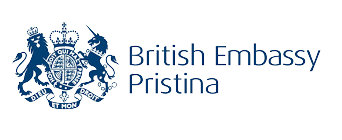Sania Samad PAKISTAN | 2018
SECTION OF DRESS: Sonay Ki Chiriya, The Golden bird
Sania, a thoughtful Textile artist living between Pakistan and New York felt drawn to the Red Dress project and reached out to collaborate.
When I read about Red Dress project, the sharing of embroideries from all around the world and stitching them together to make a dress, I felt as if Kirstie lived in Pakistan and knew my family. We use to do that at home with my grandmother, aunts’ and mom. I had to be part of the project and I was happily surprised to find Kirstie a very welcoming artist who didn’t take long to invite me to join this meaningful project.
During my research for Red Dress embroidery piece I found many similarities between my life and Red Dress, I have travelled a lot, my life and thoughts are embellished with the histories from different parts of the world. I am a Pakistani Textile Artist living between Pakistan and America for past Fifteen years.
As an artist whose work is mostly about memories, histories: personal as well as collective, I feel my work is like a fiction at times in which one can say in detail that is not possible through non-fiction. Two major influences on my design concept were words from Arundhati Roy’s novel( a celebrated female Indian writer), The Ministry of Utmost happiness, “She wondered how to unknow things, specific things that she knew, she did not wish to know’’ and a poem by Pakistani female poet Zehra Nigah titled, Samjhaute the poem is about a woven shawl in which all the motifs are lies but they are beautifully embroidered into a cover for the woman. Rukshanda Jalil, an Indian female writer translated the poem Samjhaute,
Warm and soft, this blanket
Of compromise has taken me years to weave
Not a single flower of truth embellishes it
Not a single false stitch betrays it
It will do to cover my body though
And it will bring comfort too,
If not joy, nor sadness to you.
Comparing cultures and role of power within them that creates women identities within those cultures’ socio-political environment form and shape my work.
The Top is known as ‘Kameez’, in Pakistani attire. The image of Kameez is a metaphor for women in my art work for a long time. The embroidered image depicts a Heaven where women will be treated with respect and there will be no discrimination based on genders. Images of Pakistani, American and British flags are embroidered on the shirts as these are the countries I have lived and was/is part of their socio-political fabric.
Sometimes I feel I have no Land to live hence the current piece is called ‘Sonay Ki Chiriya - The Golden bird’, name used for Indian subcontinent during early 19th century.
—
To contact Sania for commissions, please write to: saniasamadstudio@gmail.com
OUR SUPPORTERS
A huge thank you to all who have given their time, energy, enthusiasm, advice, experience and support to The Red Dress project over the years.
In addition to the organisations below, funding has been gratefully received from a number of private donations and via three crowdfunding campaigns in 2020, 2022 and 2024.
In addition to the organisations below, funding has been gratefully received from a number of private donations and via three crowdfunding campaigns in 2020, 2022 and 2024.












"
"